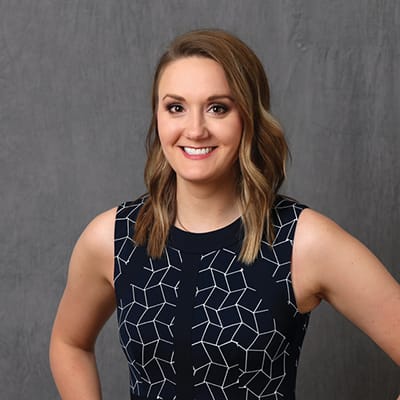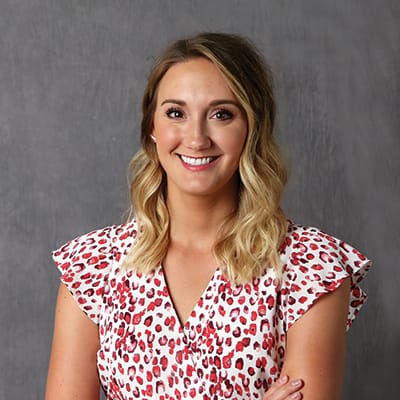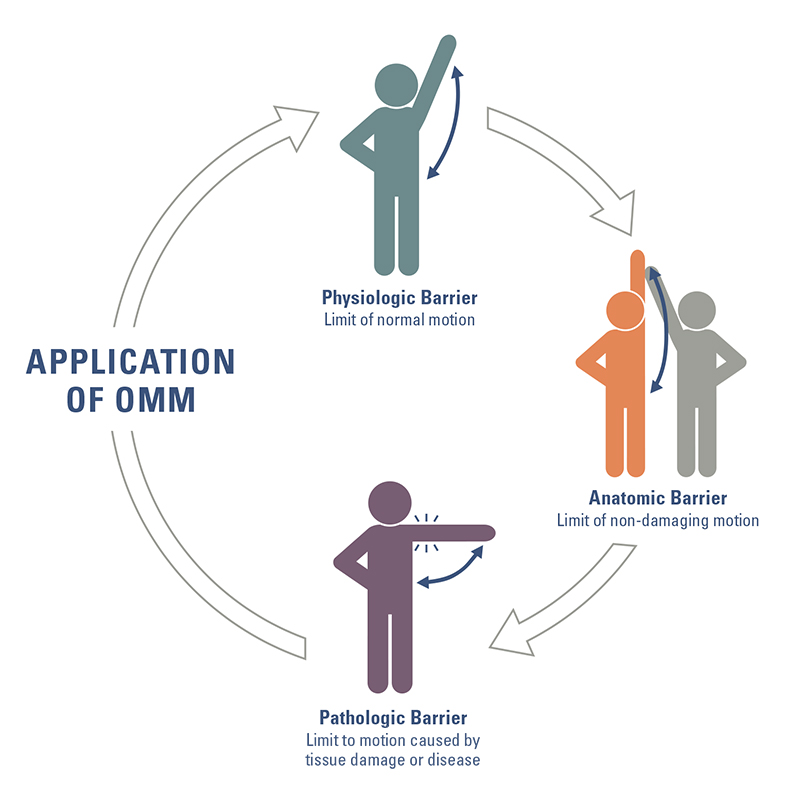Osteopathic Manipulative Medicine (OMM)
What is OMM?
In medicine, "manipulation" is defined as the therapeutic application of manual pressure or force. OMM also called Osteopathic Manipulative Treatment (OMT), is a form of manipulation that:
- Is the generic term used to refer to many different manipulation techniques.
- Can be used to treat structural and functional issues in the bones, joints, tissues, and muscles of the body.
- Uses the relationship between the neuromusculoskeletal system and the rest of the body to restore functionality and/or remove barriers to motion and healing
- Achieves and maintains patient health as part of a whole system of evaluation and treatment
Who Uses OMM?
OMM is a required and foundational element of osteopathic medical school curricula. Comprehensive OMM training occurs throughout an osteopathic medical student’s curriculum, as well as during clinical clerkship training. DO graduates may also choose to pursue residency training to specialize in OMM.
Meet our OMM-trained Physicians
|

April Kolb, DO
Serving Waukee
Dr. Kolb considers getting to know her patients on a personal level and developing long-lasting relationships key to being a Family Medicine physician. Many of her patients, particularly those with common conditions such as acute and chronic pain, find relief thanks to OMM.
|
|

Ashley Taliaferro, DO
Serving Altoona
Dr. Taliaferro enjoys the variety of challenges that she sees with her patients and is honored that they trust her with their healthcare needs. She finds it rewarding to be there for people, regardless if they feel better after one visit or several.
|
What are Some Benefits of OMM?
As one of many tools that DOs can utilize to care for patients, OMM:
- Can be used to treat a wide variety of common ailments, including headaches, arthritis, stress injuries, sports injuries, and pain in areas such as the lower back, neck, shoulders, and knees
- Provides a non-invasive and medication-free treatment option for patients
- Can be performed in many different environments
- Training enhances a physician’s overall diagnostic skills
- Can be administered safely in combination with other medical treatments to improve outcomes
OMM Visualized
OMM is used to treat many forms of bodily dysfunction including pain, discomfort, and limited range of motion caused by illness or injury. The goal of OMM is to remove these barriers in order to achieve wellness.

OMM Techniques
Below are the 40 different OMM techniques noted in the AACOM Glossary of Osteopathic Terminology.
- Active Method
- Articulatory Technique
- Balanced Ligamentous Tension
- Chapman Reflex
- Combined Method
- Compression of the Fourth Ventricle
- Counterstrain
- Direct Method
- Exaggeration Method
- Exaggeration Technique
- Facilitated Oscillatory Release Technique
- Facilitated Positional Release
- Fascial Unwinding
- Functional Method
- Hepatic Pump
- High Velocity/Low Amplitude Technique
- Indirect Method
- Inhibitory Pressure Technique
- Integrated Neuromusculoskeletal Release
- Ligamentous Articular Strain
- Lymphatic Pump
- Mandibular Drainage Technique
- Mesenteric Release Technique
- Muscle Energy
- Myofascial Release
- Myotension
- Osteopathic Cranial Manipulative Medicine
- Passive Method
- Pedal Pump
- Percussion Vibrator Technique
- Positional Technique
- Progressive Inhibition of Neuromuscular Structures
- Range of Motion Technique
- Soft Tissue Technique
- Still Technique
- Thoracic Pump
- Toggle Technique
- Traction Technique
- V-Spread Technique
- Visceral Manipulation
Source: American Association of College of Osteopathic Medicine. Download as a PDF.